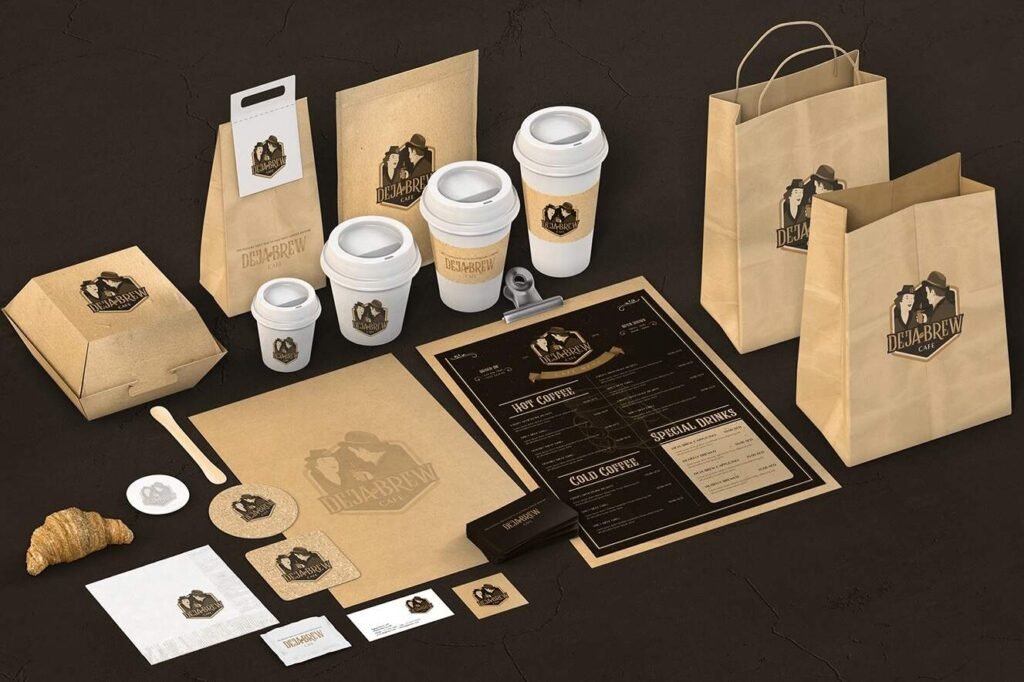Running a small restaurant is no easy feat. You put in long hours, pour your heart into the food, and dream of a bustling dining room filled with happy customers. But with stiff competition and changing dining habits, growing your restaurant can feel like an uphill battle. The good news is, with the right marketing strategies, you can attract more customers, increase your revenue, and turn your restaurant into a beloved local hotspot. In this article, we’ll explore practical and effective marketing strategies tailored to help small restaurants thrive.
Understanding Your Market
Before diving into specific marketing tactics, it’s crucial to understand your market. Knowing your target audience helps you tailor your marketing efforts to attract the right customers.
Identify Your Target Audience
Who are your ideal customers? Are they young professionals, families, or food enthusiasts? Understanding their demographics, preferences, and dining habits will help you create marketing campaigns that resonate with them.
For instance, if you cater to families, promoting kid-friendly meals and family discounts can be very effective.
Analyze Your Competition
Look at what other restaurants in your area are doing. What are their strengths and weaknesses? What can you do differently to stand out? This analysis helps you identify opportunities to differentiate your restaurant and attract more customers.
Building a Strong Online Presence
In today’s digital age, having a strong online presence is essential for any business, including small restaurants.
Create a Professional Website
Your website is often the first impression potential customers will have of your restaurant. Make sure it’s professional, easy to navigate, and mobile-friendly.
Include high-quality photos of your dishes, a clear menu, contact information, and a reservation system if possible. A blog section where you share recipes, cooking tips, and restaurant news can also help engage visitors and improve your search engine rankings.
Moreover, you should also have a “Careers” section, through which you will accept resumes and applications in order to attract qualified chefs with a BA in culinary arts.
Optimize for Local SEO
Local search engine optimization (SEO) ensures that your restaurant appears in local search results. Use relevant keywords such as “best family restaurant in [your city]” on your website.
Create and optimize your Google My Business profile with accurate information, including your address, phone number, and business hours. Encourage satisfied customers to leave positive reviews, as these can significantly impact your local search rankings.
Leverage Social Media
Social media platforms are powerful tools for connecting with potential customers and building a loyal following. Choose platforms where your target audience is most active, such as Instagram, Facebook, and Twitter.
Share engaging content like mouth-watering photos of your dishes, behind-the-scenes looks at your kitchen, and updates about special promotions or events. Engage with your followers by responding to comments, asking for feedback, and running contests or giveaways.
Creating Engaging Content
Content marketing can help you attract new customers and keep existing ones engaged. By providing valuable and entertaining content, you can build a loyal community around your restaurant.
Share Stories and Recipes
People love stories, especially when they involve food. Share the story of how your restaurant started, the inspiration behind your dishes, and profiles of your chefs and staff.
Posting recipes of popular dishes can also attract food enthusiasts who want to try making your food at home, potentially leading them to visit your restaurant.
Use Video Marketing
Videos are highly engaging and can showcase your restaurant in a dynamic way. Create short videos that highlight your menu items, show the preparation of dishes, or feature customer testimonials.
Live streaming events, such as a behind-the-scenes look at your kitchen or a Q&A with your chef, can also attract attention and engage your audience.
Invest in high-quality photography and videography to showcase your dishes and restaurant ambiance. Beautiful images and videos can captivate your audience and entice them to visit your restaurant. Share visually appealing content regularly on your website, social media, and in your marketing materials.
Feature Customer Stories and Testimonials
Showcase your loyal customers by sharing their stories and testimonials. Highlight regular customers who have a special connection with your restaurant.
Share their favorite dishes, their dining experiences, and why they keep coming back. This not only builds a sense of community but also provides social proof for potential new customers.
Develop a Chef’s Corner
Create a dedicated section on your website or social media for your chefs to share their expertise. This could include cooking tips, favorite recipes, or insights into the latest food trends.
Hosting live cooking demonstrations or Q&A sessions with your chefs can also engage your audience and provide valuable content.
Collaborate with Influencers and Bloggers
Partner with food influencers and bloggers to expand your reach and attract new customers. Invite them to dine at your restaurant and share their experience with their followers.
Collaborations with influencers can provide authentic and engaging content that resonates with their audience and introduces your restaurant to a broader customer base.
Create Interactive Content
Engage your audience with interactive content, such as polls, quizzes, and contests. For example, you could run a poll asking customers to vote for their favorite dish or create a quiz to help them find their perfect meal from your menu.
Interactive content is fun and encourages participation, helping to increase engagement and brand loyalty.
Share User-Generated Content
Encourage your customers to share their dining experiences on social media and tag your restaurant. Repost user-generated content on your social media profiles to show appreciation for your customers and build a sense of community.
This type of content is authentic and can be highly influential in attracting new customers.
Implement Email Marketing Campaigns
Use email marketing to share your engaging content with your subscribers. Send regular newsletters featuring your latest blog posts, seasonal menu items, upcoming events, and special promotions.
Personalize your emails based on customer preferences and past behavior to make them more relevant and engaging.
Optimize Content for SEO
Ensure your content is optimized for search engines to increase its visibility and attract more visitors to your website. Use relevant keywords, create descriptive meta tags, and include high-quality images with alt text.
Regularly update your blog with fresh content to improve your search engine rankings and drive organic traffic.
Offering Promotions and Special Deals
Promotions and special deals are great ways to attract new customers and encourage repeat visits.
Creating Limited-Time Offers
Limited-time offers create a sense of urgency and encourage customers to act quickly. Consider launching special deals that are available only for a short period, such as a weekend or a specific week.
Promote these offers through your website, social media, and email marketing to reach a wide audience. Limited-time offers can include discounts on popular menu items, special prix fixe menus, or exclusive dining experiences.
Implementing Loyalty Programs
Loyalty programs reward repeat customers and encourage them to return more frequently. Develop a loyalty program that offers points for each visit or purchase, which can be redeemed for discounts, free items, or exclusive perks.
Make it easy for customers to join and track their rewards through a mobile app or loyalty card. Promote your loyalty program through your marketing channels and in your restaurant to increase participation.
Hosting Happy Hours
Happy hours can attract customers during slower periods and encourage them to stay longer. Offer discounts on drinks and appetizers during specific hours, typically in the late afternoon or early evening.
Create a relaxing and inviting atmosphere with special menus, live music, or themed events. Promote your happy hour specials through social media, your website, and in-house signage.
Running Seasonal Promotions
Seasonal promotions capitalize on the flavors and festivities of each season. Create special menus or dishes that highlight seasonal ingredients and align with holidays or local events.
For example, offer a summer BBQ menu, a holiday-themed brunch, or a winter comfort food special. Seasonal promotions can attract both regular customers and new visitors looking for unique dining experiences.
Offering Group Discounts
Group discounts can encourage larger parties to dine at your restaurant, increasing your average ticket size. Offer discounts for groups of a certain size, such as a percentage off the total bill or a free appetizer for parties of six or more.
Promote these group deals to local businesses, community organizations, and through your marketing channels to attract larger gatherings.
Implementing Referral Programs
Referral programs incentivize your existing customers to bring in new business. Offer rewards, such as discounts or free items, to customers who refer friends and family to your restaurant.
Make it easy for customers to refer others by providing referral cards or a digital referral system. Promote your referral program through email marketing, social media, and in your restaurant.
Creating Exclusive Membership Programs
Exclusive membership programs can offer added value and a sense of exclusivity to your loyal customers. Charge a membership fee for access to special perks, such as priority reservations, members-only events, or unique menu items.
Promote the benefits of membership through your marketing channels and provide exceptional service to ensure members feel valued.
Partnering with Local Businesses
Form partnerships with local businesses to create joint promotions that benefit both parties. For example, collaborate with a nearby theater to offer dinner-and-show packages, or partner with a local gym to provide discounts for their members.
These partnerships can help you reach new customers and create a sense of community.
Utilizing Social Media Exclusives
Social media exclusives can drive engagement and attract followers to your social media profiles. Offer special deals and promotions exclusively to your social media followers, such as a discount code or a free item with purchase.
Encourage followers to share your posts and tag friends to increase visibility and reach a larger audience.
Celebrating Milestones and Anniversaries
Celebrate your restaurant’s milestones and anniversaries with special promotions and events. Offer discounts or freebies to customers who visit on your anniversary or during the week leading up to it.
Host special events, such as a live music night or a tasting menu, to create excitement and draw in customers. Promote these celebrations through all your marketing channels to ensure maximum participation.
Utilizing Email Marketing
Email marketing is a cost-effective way to stay in touch with your customers and keep them informed about your restaurant. It allows you to share updates, promote special offers, and engage with your audience on a regular basis.
Build an Email List
Start by building an email list of your customers. Encourage sign-ups by offering a discount on their next visit or a free appetizer. Place sign-up forms on your website, social media pages, and at your restaurant.
Ensure that you get explicit permission from customers before adding them to your list.
Send Regular Newsletters
Send regular newsletters to keep your customers informed about what’s happening at your restaurant. Share updates about new menu items, upcoming events, special promotions, and interesting behind-the-scenes stories.
Make sure your emails are visually appealing, easy to read, and include a clear call-to-action.
Personalize Your Emails
Personalization can significantly increase the effectiveness of your email campaigns. Use your customers’ names, and tailor your messages based on their preferences and past behavior.
For example, if a customer frequently orders a specific dish, you can send them a special offer related to that item.
Engaging with the Community
Being an active member of your local community can help build your restaurant’s reputation and attract loyal customers. Engage with your community by participating in local events, supporting local causes, and collaborating with other businesses.
Participate in Local Events
Get involved in local festivals, fairs, and other community events. Set up a booth or food stall to showcase your dishes and interact with potential customers.
Participating in these events helps increase your visibility and shows that you’re an active part of the community.
Support Local Charities
Supporting local charities and non-profit organizations can create positive associations with your restaurant. Host charity events, donate a portion of your sales to a local cause, or provide meals for community events.
Highlight your charitable efforts on your website and social media to let your customers know about your community involvement.
Collaborate with Local Businesses
Form partnerships with other local businesses to cross-promote each other. For example, you can collaborate with a nearby gym to offer their members a discount at your restaurant, or team up with a local brewery for a joint event.
These collaborations can help you reach new customers and create a sense of community.
Enhancing the Customer Experience
Providing an exceptional dining experience is key to building a loyal customer base and encouraging word-of-mouth referrals.
Focus on Quality and Consistency
Ensure that the quality of your food and service is consistently high. Use fresh, high-quality ingredients, and train your staff to provide excellent customer service.
Consistency in food quality and service ensures that customers have a positive experience every time they visit.
Gather and Act on Customer Feedback
Regularly gather feedback from your customers to understand what they like and where you can improve. Use comment cards, online surveys, and social media to collect their opinions.
Act on this feedback to make necessary improvements and show your customers that you value their input.
Create a Memorable Atmosphere
The atmosphere of your restaurant plays a significant role in the overall dining experience. Create a welcoming and comfortable environment that reflects your brand.
Pay attention to details like lighting, music, and decor to create a memorable ambiance that encourages customers to return.
Leveraging Technology
Technology can streamline your operations, enhance the customer experience, and improve your marketing efforts.
Implement an Online Ordering System
Offering online ordering can attract customers who prefer to dine at home. Implement an easy-to-use online ordering system on your website.
Ensure that the system is mobile-friendly, as many customers will place orders from their smartphones.
Use Reservation Management Software
Reservation management software can help you streamline the booking process and reduce wait times. Allow customers to make reservations online and send them automated reminders.
This software can also help you manage seating arrangements and track customer preferences.
Embrace Contactless Payments
Contactless payment options, such as mobile wallets and tap-to-pay cards, are becoming increasingly popular. Offering these options can enhance the customer experience by making the payment process faster and more convenient.
Implementing a Strong Branding Strategy

A strong brand helps your restaurant stand out and builds a loyal customer base. Your brand encompasses everything from your logo and color scheme to the way you communicate with your customers.
Develop a Unique Brand Identity
Your brand identity should reflect the essence of your restaurant. Consider what makes your restaurant unique—whether it’s your menu, your story, or your ambiance.
Develop a logo, color scheme, and design elements that reflect this identity. Consistency is key, so use these elements across all your marketing materials, from your website and social media to your menus and signage.
Create a Memorable Tagline
A catchy and memorable tagline can help reinforce your brand. It should be short, reflect your restaurant’s personality, and convey a key message about what you offer.
For example, if your restaurant specializes in farm-to-table dining, a tagline like “Fresh from Farm to Fork” can effectively communicate your commitment to fresh ingredients.
Tell Your Story
People love stories, and sharing the story behind your restaurant can create a deeper connection with your customers. Share how your restaurant started, your mission, and what inspires your menu.
Use your website, social media, and in-person interactions to tell your story and build a loyal customer base.
Utilizing Online Reviews and Reputation Management
Online reviews significantly impact potential customers’ decisions. Managing your online reputation is crucial for attracting new customers and maintaining a positive image.
Encourage Positive Reviews
Encourage satisfied customers to leave positive reviews on platforms like Google, Yelp, and TripAdvisor. Make it easy for them by providing direct links to your review pages.
You can ask for reviews through email follow-ups, on your receipts, or through signs at your restaurant.
Respond to Reviews
Take the time to respond to both positive and negative reviews. Thank customers for their positive feedback and address any issues raised in negative reviews.
Responding professionally and promptly to reviews shows that you value customer feedback and are committed to improving their experience.
Monitor Review Sites
Regularly monitor review sites to stay on top of what customers are saying about your restaurant. Use tools like Google Alerts or reputation management software to keep track of new reviews.
This proactive approach allows you to address issues quickly and maintain a positive online presence.
Implementing Creative Marketing Tactics
Thinking outside the box with creative marketing tactics can set your restaurant apart and attract more customers.
Host Pop-Up Events
Pop-up events are a great way to create buzz and attract new customers. You can host a pop-up at a different location, collaborate with another business, or introduce a new menu item.
Promote the event through social media, email marketing, and local media to generate excitement.
Create a Food Truck
If you have the resources, consider launching a food truck as an extension of your restaurant. A food truck can help you reach new customers and promote your brand in different locations.
Use the food truck to serve popular menu items and hand out promotional materials to drive traffic back to your main location.
Engage in Guerrilla Marketing
Guerrilla marketing involves unconventional and creative tactics to promote your restaurant. This can include sidewalk chalk art, flash mobs, or unique outdoor advertising.
These tactics can create memorable experiences and generate word-of-mouth buzz.
Offering Seasonal and Limited-Time Menus
Introducing seasonal and limited-time menus can create a sense of urgency and excitement, encouraging customers to visit more frequently.
Highlight Seasonal Ingredients
Create dishes that highlight seasonal ingredients and promote them as limited-time offerings. This not only attracts customers looking for fresh and unique flavors but also allows you to take advantage of seasonal produce, which can be more cost-effective.
Run Limited-Time Promotions
Offer special promotions for a limited time, such as a “Chef’s Special” menu or a “Summer BBQ” series. Promote these specials through your website, social media, and email marketing to create anticipation and drive traffic.
Celebrate Holidays and Events
Capitalize on holidays and local events by offering themed menus and promotions. Whether it’s a Valentine’s Day dinner special or a Fourth of July BBQ, these events provide an opportunity to attract customers and create a festive atmosphere.
Building Partnerships with Local Suppliers
Partnering with local suppliers can enhance the quality of your ingredients and strengthen your community ties.
Source Locally
Sourcing ingredients from local farmers and suppliers ensures fresh and high-quality produce. It also supports the local economy and can be a selling point for your restaurant.
Highlight your commitment to local sourcing on your menu and marketing materials.
Collaborate on Events
Collaborate with local suppliers on special events, such as farm-to-table dinners or wine pairings. These events can attract customers interested in local and sustainable dining options.
Promote the partnership and event details through your marketing channels.
Feature Local Products
Feature local products prominently in your menu and marketing materials. This can include local wines, cheeses, or artisanal breads.
Highlighting these products can attract customers who appreciate local and high-quality ingredients.
Embracing Sustainability Practices
Incorporating sustainability practices into your restaurant can attract environmentally conscious customers and enhance your brand’s reputation.
Sustainable practices not only reduce your environmental impact but also can result in cost savings.
Implementing Eco-Friendly Practices
Start by evaluating your current operations and identifying areas where you can reduce waste and energy consumption. Simple changes such as using energy-efficient appliances, reducing water usage, and minimizing food waste can make a significant difference.
Consider implementing recycling programs and composting food scraps.
Sourcing Sustainable Ingredients
Source ingredients from suppliers who prioritize sustainability. Look for organic produce, free-range meats, and sustainably caught seafood.
Highlighting these practices on your menu and marketing materials can appeal to customers who value environmentally friendly dining options.
Reducing Single-Use Plastics
Reduce the use of single-use plastics by switching to biodegradable or reusable alternatives. Offer straws and utensils only upon request and encourage customers to bring their own containers for takeout. Promoting these practices can enhance your restaurant’s eco-friendly image.
Expanding Your Reach with Delivery and Takeout Services

Offering delivery and takeout services can expand your customer base and increase revenue, especially during times when dine-in traffic may be lower.
Partner with Delivery Platforms
Partner with popular delivery platforms like Uber Eats, Door Dash, and Grub-hub to reach a wider audience. Ensure your menu is optimized for delivery and that your food travels well.
Promote your delivery options on your website, social media, and through in-store signage.
Implement Your Own Delivery Service
If you prefer to maintain more control over the delivery process, consider implementing your own delivery service. This allows you to manage the customer experience from start to finish and can result in higher profit margins.
Ensure you have a reliable system for taking orders and delivering food promptly.
Promote Takeout Specials
Encourage customers to order takeout by offering special deals and promotions. Consider bundling popular menu items into family-sized meals or offering discounts for orders placed directly through your website.
Use your marketing channels to promote these takeout specials.
Adapting to Trends and Customer Preferences
Staying ahead of industry trends and adapting to changing customer preferences is crucial for long-term success.
Monitor Industry Trends
Keep an eye on industry trends by following food industry publications, attending trade shows, and participating in webinars. Trends like plant-based dining, health-conscious menus, and global flavors can provide inspiration for new menu items and marketing campaigns.
Listen to Customer Feedback
Regularly solicit feedback from your customers to understand their preferences and expectations. Use this feedback to make informed decisions about menu changes, service improvements, and marketing strategies.
Showing that you value customer input can build loyalty and encourage repeat visits.
Experiment with Menu Innovations
Don’t be afraid to experiment with new menu items and concepts. Introduce limited-time offerings to test new ideas and gauge customer interest. Highlight these innovations through your marketing channels to attract curious diners and create excitement.
Engaging in Community Marketing
Community marketing involves building relationships and engaging with your local community to drive brand awareness and loyalty.
Sponsor Local Events
Sponsoring local events such as festivals, sports teams, or charity runs can increase your visibility and demonstrate your commitment to the community.
Choose events that align with your brand values and target audience. Promote your sponsorship through your marketing channels and at your restaurant.
Host Community Fundraisers
Host fundraisers for local schools, non-profits, or community organizations. Donate a portion of your sales to the cause and encourage your customers to participate.
Fundraisers not only support worthy causes but also build goodwill and positive associations with your restaurant.
Participate in Local Business Groups
Join local business groups and chambers of commerce to network with other business owners and community leaders. Participate in group activities, attend meetings, and collaborate on community initiatives. Building these relationships can lead to new opportunities and increased support for your restaurant.
Developing a Mobile App
A mobile app can enhance the customer experience, streamline operations, and boost engagement.
Offer Mobile Ordering
Allow customers to place orders directly through your mobile app. Mobile ordering can increase convenience and reduce wait times, improving the overall dining experience. Integrate features such as order customization, payment options, and loyalty rewards.
Provide Exclusive Offers
Use your mobile app to offer exclusive deals and promotions to app users. Push notifications can alert customers to special offers, events, and new menu items, encouraging repeat visits and engagement.
Collect Customer Data
Collect customer data through your app to better understand their preferences and behaviors. Use this data to personalize marketing messages, improve service, and make informed business decisions.
Enhancing Your Menu Design
A well-designed menu can influence customer choices and enhance their dining experience.
Use Descriptive Language
Use descriptive language to highlight the unique features and flavors of your dishes. Vivid descriptions can make your menu items more appealing and entice customers to try something new.
Avoid overly complex terms and focus on what makes each dish special.
Highlight Signature Dishes
Feature your signature dishes prominently on the menu to draw attention to your specialties. Use visual cues such as borders, icons, or special sections to make these items stand out.
Signature dishes can become a hallmark of your restaurant and encourage repeat orders.
Include High-Quality Images
Incorporate high-quality images of your most popular or visually appealing dishes. Images can whet customers’ appetites and help them visualize their choices. Ensure that the photos accurately represent the dishes to set proper expectations.
Maintaining Consistent Branding

Consistency in branding across all touchpoints helps reinforce your restaurant’s identity and build customer trust.
Align Online and Offline Branding
Ensure that your online presence matches your in-restaurant experience. Use the same color schemes, logos, and messaging across your website, social media, and physical space. Consistent branding creates a cohesive and professional image.
Train Your Staff
Train your staff to embody your brand values and deliver a consistent customer experience. From the way they greet customers to how they handle complaints, your staff should reflect your restaurant’s identity and commitment to quality.
Regularly Review and Update
Regularly review your branding materials and strategies to ensure they remain relevant and effective. Update your branding as needed to keep it fresh and aligned with current trends and customer expectations.
By implementing these comprehensive marketing strategies, you can effectively grow your small restaurant, attract new customers, and build a loyal following.
A combination of digital marketing, community engagement, creative tactics, and data-driven decisions will help you stand out in a competitive market and achieve your business goals.
Measuring and Analyzing Your Marketing Efforts
Regularly measuring and analyzing your marketing efforts ensures that you’re on the right track and helps you make data-driven decisions.
Track Key Metrics
Identify key performance indicators (KPIs) that align with your marketing goals, such as customer acquisition, retention rates, and sales growth. Use tools like Google Analytics, social media insights, and POS systems to track these metrics.
Gather Customer Feedback
Regularly collect feedback from your customers to understand what’s working and what needs improvement. Use surveys, comment cards, and social media to gather their opinions.
Use this feedback to refine your marketing strategies and enhance the customer experience.
Adjust Your Strategies
Use the data and feedback you’ve gathered to adjust your marketing strategies as needed. Experiment with different tactics, analyze the results, and focus on the strategies that yield the best outcomes.
Continuous improvement is key to long-term success.
Wrapping it up
Growing your small restaurant requires a blend of strategic marketing efforts and genuine community engagement. By understanding your market, building a strong online presence, creating engaging content, offering enticing promotions, and actively participating in community initiatives, you can attract new customers and build a loyal following.
Implementing these comprehensive marketing strategies will not only enhance your restaurant’s visibility but also foster lasting relationships with your customers and local community, setting the foundation for long-term success and growth.
READ NEXT:
- Effective Marketing Strategies for Title Companies
- Marketing Strategies for Senior Living Communities
- Innovative Marketing Strategies for Startups
- Marketing Strategies for Launching a New Business
- Hot Marketing Ideas to Try in August






















Comments are closed.